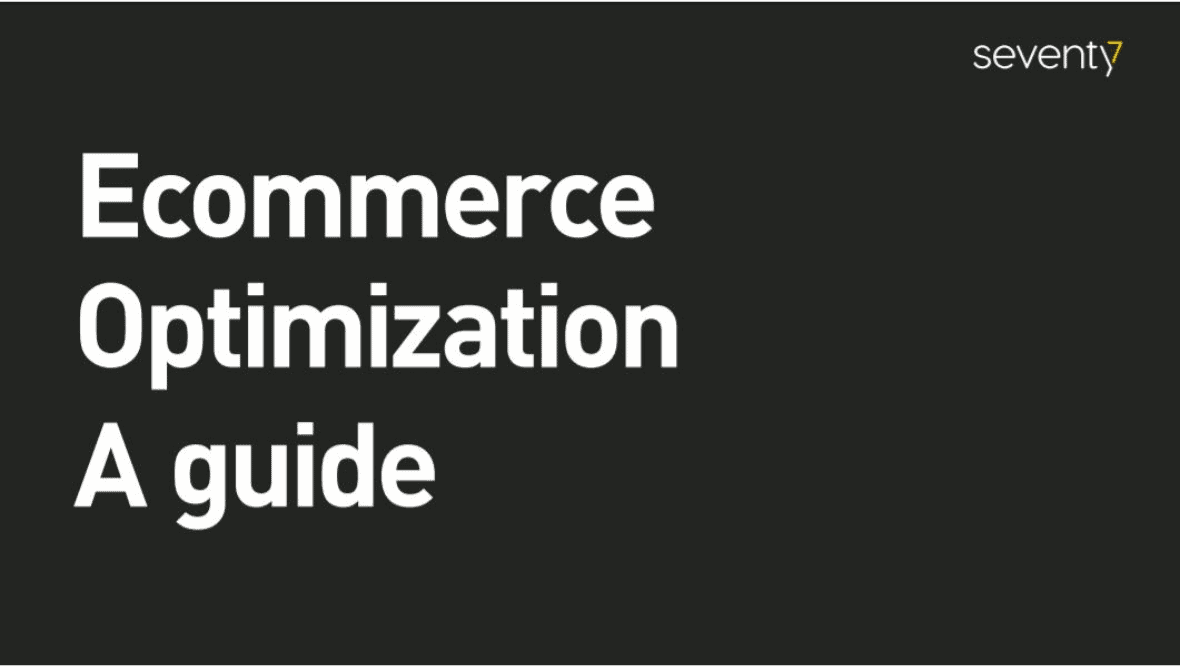
10 Step Guide to Ecommerce Optimisation
Properly optimizing an ecommerce website takes time and maintenance but in return will enhance user experience, increase conversions, and improve overall performance.
We have put together a checklist of some of the 10 key elements to address optimization strategies:
Responsive Design & Mobile Optimization:
Google, who handle the majority of worldwide search traffic, primarily uses the mobile version of a website for ranking and indexing purposes making it worthwhile to ensure your website is responsive and displays well on mobile as well as desktops and tablet devices.
Page Load Speed Optimization:
Another key ranking factor is page load speed. The faster a page loads the better experience a user has with that page, and search engines only want to deliver the best for their customers. Optimise your page load speed by ensuring assets (images, video, etc) are compressed to an appropriate size, minimise HTTP requests and use browser caching. Making use of a Content Delivery Network (CDN) can help distribute content efficiently.
Clear Navigation & User-Friendly Layout:
Above any crawlers or search engines, it is people that should always be the priority for your site. Making each page user-friendly with a clear layout, logical navigation and helpful site search function will ensure a positive experience and encourage return visits.
High-Quality Product Images & Descriptions:
The purpose of your site is to sell your products. Whether you have a high volume of product pages or not, each of these product pages should be able to stand alone and sell the product in question. The product page may be the only page your customer sees before making a decision, thus should be effective in communicating all the reasons why the product in question is exactly what they need. Do this with high-quality, optimised imagery that shows off the product from all angles and in use, partner this with well-written copy that highlights each of the features and benefits as well as specifications and sizing information. Finding the right balance between having too much copy and not enough copy is tricky and varies from product to product but adjustments can be made according to performance.
Streamlined Checkout Process:
In order to minimise the number of abandoned baskets it should be as easy as possible to complete a purchase at the checkout. The option for guest checkout can speed things up for new customers while the ability to log in to an area with saved details will appeal to return customers. In either process it should only require the information needed to allow completion of the purchase in a smooth and speedy process. Offering multiple payment options can ensure everyone has a convenient way to pay.
Trust & Security:
Trust is a key element when people buy online. Displaying widely recognised, verified trust badges and SSL certificates can establish an element of familiarity with the customer, this can trigger enough trust to buy. Ensuring you offer known secure payment options as well as clearly outlining terms of service will also contribute towards building trust for new users to your site.
Product Reviews & Ratings:
User-generated content (UGC) is a confirmed ranking factor for Google and by including reviews and ratings for your products you allow your customers to vouch for your products. This builds trust for other customers but also sends a clear signal to search engines as to whether or not the site is suitable to be delivered as an option for future customers, sites with a significant number of negative reviews can be at a disadvantage when it comes to rankings.
Personalisation & Recommendations:
Including the functionality to display additional products, either related to the current product or based on personalisation for that customer. Enabling quick ‘add to basket’ access to relevant products without disrupting the original purchase journey can help to increase basket value with cross-selling. Alternatively, if there is a higher spec product of the same ilk, making it visible to the customer during the decision stage can result in an upsell.
On-Page SEO Optimization:
What can seem like small, irrelevant details such as URLs, metadata, ALT text and Htags can make a huge difference to the performance of your site. Completing these finer SEO details and tailoring them to each page, with keyword consideration, will ensure search engines know exactly what each of your pages is about and exactly which customers to deliver to. Your metadata is then what entices that customer to click through to your site and the more clicks you get, the higher you’ll climb up the rankings.
Social Media Integration:
Social media is a great way to create a community around your business and promote new products and special events. Incorporating social share buttons makes it easy for friends to promote your business amongst themselves. You can also incorporate social feeds with user-generated content to potential customers can see the product in use.
Once all of the above is in place you can observe the analytics and data tracking to monitor behaviours, traffic sources and conversions. You can use this data to make informed decisions throughout the future of your business. Recognise what is performing well and which areas need some tweaking and adjust your strategy accordingly to remain authentic, competitive and relevant.
While these points should be applied to every website, your site should also be unique and tailored to your own customers. If you need any help at all, don’t hesitate to get in touch and we can help you like we have helped our other clients.


